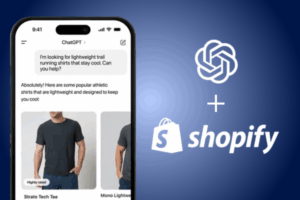Selling products on Amazon has led to a new and significant revenue stream for many brands. If you work for a brand that sells on Amazon, it’s crucial to invest time in how you present the products that you sell on the channel by optimizing your Amazon listings. When done well, your products will rank highly in search results and your conversion rates will improve. This can mean hundreds of thousands, if not millions, in additional revenue for your brand. So where should you begin?
Start with Amazon Search Keywords
Like search engine optimization (SEO) for Google and Bing, Amazon SEO starts with finding popular, relevant keywords that will lead users to your products. For example, if you’re selling a fantasy novel, the term “fantasy novel” is a starting point for your research. From there, you may find that the phrases fantasy book, outer space fantasy book, romance fantasy novel, romantasy novel, etc., all have good search volumes. The key is to stick with the most relevant terms. If your story takes place in Middle Earth, “outer space fantasy book” will not help you sell it no matter how popular the term is. In fact, using that phrase on the product listing could hurt your credibility.
Craft Great Product Titles
Once you’ve found the Amazon keywords that will work best for your product, it’s time to write a listing title that grabs a shopper’s attention. This is where having expert help with Amazon listings can come in handy. While Amazon has documentation for best practices, understanding what works best for your industry and niche takes time. Would your customers prefer short titles or are they more likely to click on titles that include several adjectives? Experiment with A/B testing to learn for yourself or rely on the experience of an Amazon Advertising service like ROI Revolution’s Amazon and Retail Media Management.
Focus on Bullets and Product Descriptions
Bullet points and product descriptions allow you to work the relevant, popular Amazon search keywords you found during your research phase into the listing. As importantly, they also serve as your opportunity to highlight what makes your product special. Don’t just tell the reader that it’s a high-quality product; explain in detail how it’s different. What is the unique value that it will bring to your customer? How does it solve their problem in the best way possible? Appeal to the need that brought them to your page.
Bullet Points are an important component of Amazon product detail pages. Their prime placement below the title and price makes them one of the first places that shoppers can learn more about your product. While product descriptions are important as well, shoppers are more likely to read your bullet points since they are closer to the top of the page.
For this reason, it is important to use the bullet section of the product listing page to speak to key product details and unique selling points for your product. Make sure you answer all questions that a customer could have when deciding whether to purchase your product and be sure to do this in a clear and concise way. Once you have your bullets refined, use the product description to go into more detail about the product and your brand in general.
Wondering whether you have covered the important details in your bullet point section?
ROI Revolution Pro Tip: Look at common questions asked and purchaser feedback from your existing customer reviews and be sure that the answers to those questions are covered in the bullet section of your product detail page. Digging into commonly asked questions and customer reviews is a treasure trove of purchase behavior information and should always be included in your consumer research and product detail page development.
Add A+ Content to your Page
Building out quality A+ content for your product detail pages and your brand store should be a top priority for every brand selling on Amazon. A+ Content includes rich text, imagery, comparison charts, videos, and more. It’s a chance to showcase your brand and according to Amazon, it can improve sales by an average of 5.6%.
Don’t Forget About Backend Keywords
Backend Amazon search keywords allow you to include words that would normally be associated with your product and may be used by customers when searching for your product, but that you may not want featured on your product detail page. For example, say you are a brand that sells luxury women’s handbags. You may decide that the term ‘purse’ does not fall within your luxury brand guidelines. However, many prospective customers may use that term when searching and shopping for a new handbag. In this example, it would greatly benefit your brand to add ‘purse’ as a backend keyword.
Collect Data on your Amazon Listing Optimizations
Once you’ve finished optimizing your Amazon listings, give them some time to run and collect data. If your product’s ranking or conversion rate isn’t where you want it to be, tweak your title, description, or both. Optimization is more of an on-going process than a one-and-done task, but the investment is worth it. Brands like yours are scaling their Amazon businesses everyday with Amazon content optimization.
Looking for Help Optimizing your Amazon Listings?
If your brand doesn’t have the personnel, time or expertise to tackle optimizing your Amazon product listings, don’t worry. ROI Revolution offers a done-for-you Amazon listing optimization service to help brands just like yours scale their business on Amazon.
Schedule a call with our team to learn how we can help you scale your brand’s Amazon business.







